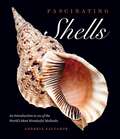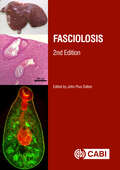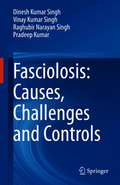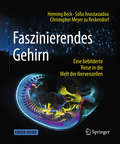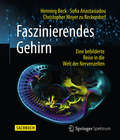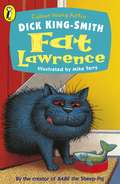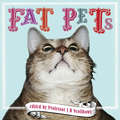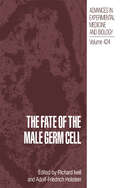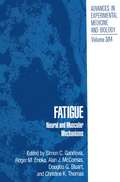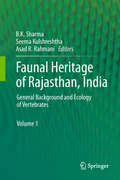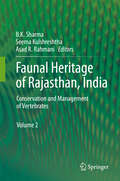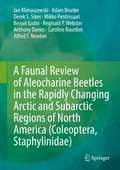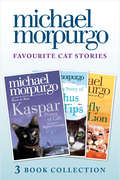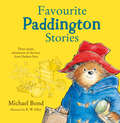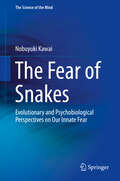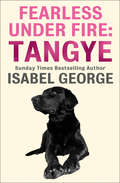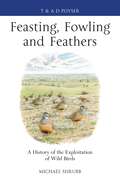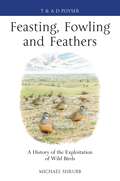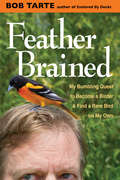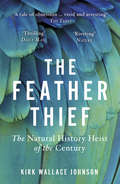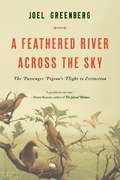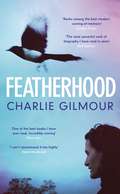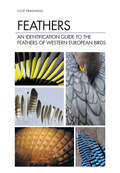- Table View
- List View
Fascinating Shells: An Introduction to 121 of the World’s Most Wonderful Mollusks
by Andreia SalvadorBeautiful photographs of stunning shells from London's Natural History Museum, home to one of the most significant and comprehensive collections in the world. Collected and treasured for their beauty, used in religious rituals, or even traded as currency, shells have fascinated humans for millennia. Ancient and enchanting, dazzling in form and variety, these beautiful objects come from mollusks, one of the most diverse groups in the animal kingdom, including snails, oysters, cuttlefish, and chitons. Soft-bodied, these creatures rely on shells for protection from enemies and their environments, from snowy mountains to arid deserts, in deep-sea hydrothermal vents and the jungles of the tropics, on rocky shores, and in coral reefs. In this book, mollusk expert Andreia Salvador profiles some of the world’s most beautiful and quirky shells, each selected from the more than eight million specimens held in the collection at London’s Natural History Museum. We lock eyes with the hundred-eyed cowry, named after "the all-seeing one," the giant Argus Panoptes of Greek mythology. We see how shells' appearances translate into defense strategies, as with the zigzag nerite, which varies its patterning to deceive and confuse predators. And we meet shell inhabitants, such as the amber snail, which eats earthworms by sucking them up like spaghetti. Reproduced in full color and striking detail, these shells have much to reveal about the history of collecting, the science of taxonomy, and the human desire to understand the natural world.
Fasciolosis
by John P. DaltonFasciolosis is a major global infection of livestock causing both huge losses to the agricultural community and affecting human health as a food-borne disease. Fully updated throughout, this new edition continues to cover the life cycle, biology, and development of the parasite; clinical pathology, immunology, diagnosis and vaccine development; and emergence, cause and mechanisms of drug resistance. It reviews the temperate liver fluke Fasciola hepatica, together with molecular, biochemical, control, and epidemiologial aspects of the tropical liver fluke F. gigantica. Many fundamental advances have taken place in the last two decades, but of particular importance has been the mapping of the draft genome of Fasciola. In addition, comprehensive advances in transcriptomics, proteomics and glycomics have been made, and the book therefore pays particular attention to these developments with the addition of brand-new chapters. Also covering the impact these parasites have had on the global human population, their distribution and their ecology, this book provides a comprehensive and accessible resource for scientists, researchers and students of medical and veterinary parasitology.
Fasciolosis: Causes, Challenges and Controls
by Dinesh Kumar Singh Vinay Kumar Singh Raghubir Narayan Singh Pradeep KumarThis book provides an up-to-date review of fasciolosis, a disease caused by Fasciola hepatica and Fasciola gigantica, including its biology, transmission, epidemiology, host distribution, economic impact, and novel approaches for its diagnosis, treatment and prevention.It first offers a brief overview of the history of the disease, the genetic diversity of the parasite and its distribution, and the ecology of the vector snail, which belongs to the Lymnaeidae/Planorbidae family. It also examines the current strategies and novel approaches for controlling the parasite, diagnosing infections and vaccine development.Importantly, it highlights issues relating to the control of fasciolosis, including drug resistance, lack of effective diagnostics, and the parasite’s long-term survival strategies based on regulation and modulation of the host immune system. Lastly, it discusses the novel control snail vectors using bait formulations, and synergetic and phototherapy treatment with chlorophyllin, which does not kill the vector.
Faszinierendes Gehirn: Eine bebilderte Reise in die Welt der Nervenzellen
by Henning Beck Sofia Anastasiadou Christopher Meyer zu ReckendorfVon den spektakulären Windungen des Großhirns bis zu den filigranen Formen einzelner Nervenzellen – von den einzigartigen Schleifen, Schichten und Schlaufen des Kleinhirns bis in die feinen Verästelungen der Nervenfasern unserer Muskeln – von der Funktion unserer Sinne bis an die Grenzen der modernen Hirnforschung: Dieses Buch nimmt Sie mit in die spannende Welt des Gehirns und bietet atemberaubende Einblicke in die Architektur und Funktion der Nervenzellen.Doppelseitige Kurzkapitel, gespickt mit spektakulären Abbildungen, stellen jeweils ein konkretes Thema der Neurobiologie kompakt und verständlich vor. Faszinierende und zum Teil noch nie gezeigte Aufnahmen verdeutlichen die ganze Ästhetik der Welt in unserem Kopf und machen Lust auf die Wissenschaft der Nervenzellen. Ein Buch zum Durchlesen, Querlesen und Vorlesen. Für jeden, der sich für das Gehirn interessiert. Ohne unnötige Fachbegriffe, dafür mit viel Begeisterung für eine der spannendsten Wissenschaften unserer Zeit.
Faszinierendes Gehirn: Eine bebilderte Reise in die Welt der Nervenzellen
by Henning Beck Sofia Anastasiadou Christopher Meyer zu ReckendorfVon den spektakulären Windungen des Großhirns bis zu den filigranen Formen einzelner Nervenzellen – von den einzigartigen Schleifen, Schichten und Schlaufen des Kleinhirns bis in die feinen Verästelungen der Nervenfasern unserer Muskeln – von der Funktion unserer Sinne bis an die Grenzen der modernen Hirnforschung: Dieses Buch nimmt Sie mit in die spannende Welt des Gehirns und bietet atemberaubende Einblicke in die Architektur und Funktion der Nervenzellen.Doppelseitige Kurzkapitel, gespickt mit spektakulären Abbildungen, stellen jeweils ein konkretes Thema der Neurobiologie übersichtlich und verständlich vor. Faszinierende und zum Teil noch nie gezeigte Aufnahmen verdeutlichen die ganze Ästhetik der Welt in unserem Kopf und machen Lust auf die Wissenschaft der Nervenzellen. Ein Buch zum Durchlesen, Querlesen und Vorlesen. Für jeden, der sich für sein Gehirn interessiert. Ohne unnötige Fachbegriffe, dafür mit viel Begeisterung für eine der spannendsten Wissenschaften unserer Zeit.
Fat Lawrence
by Dick King-SmithA very funny animal story from the award-winning writer Dick King-SmithLaurence Higgins, an enormously fat black cat, has breakfast with Mrs Higgins, lunch with the Normans, tea with old Mr Mason and supper with the Barclay-Lloyds. None of them know why he is so fat on just one meal a day! Lawrence is happy until he finds the walking from house to house tiring and begins to get indigestion. His friends tell him to lose weight if he wants a girl friend so he begins to spend one day in four with all his owners. He gets thinner but the cat he fancies down the road tells him she doesn't like slim boys - she's lost her heart to an enormously fat black cat she used to see up the road! Triumphantly Lawrence returns to his four meals a day, spurred on by the thought of meeting Bella when he's back to his normal size.
Fat Pets
by Professor J. D. ScoffbowlIt’s the ideal Christmas gift – the first ever collection of pictures of the world’s fattest pets! Marvel at the supersized cats, dogs, rabbits and others to be found in this astounding and entertaining book. Will fit in most stockings.
The Fate of the Male Germ Cell (Advances in Experimental Medicine and Biology #424)
by Richard Ivell Adolf-Friedrich HolsteinTHE FASCINATION The male germ cell is the only cell of the human organism that leaves the body when it has achieved its final, highly sophisticated structure and properties. The male germ cell is designed for one purpose only: to reach the female gametes and to fertilize them. The various stages in the development of the male germ cell are characterized by proliferative phases, by the recombination of the maternal and paternal chromosomes, and by the differentiation and development of a specialized transport vehicle, the spermato zoon. Furthermore, the establishment of a special pool of stem cells, the spermatogonia, guarantees the continuity of the sperm-generation process from puberty to old age. THE FATE OF THE MALE GERM CELL The destiny of any individual germ cell is determined by a program that we know only in fragments. On the one hand every human male is able to produce many billions of germ cells in his lifetime, yet the chance of any single sperm reaching and fertilizing the female germ cell is exceedingly rare. A fertility disturbance means that somewhere during the complicated playing out of the germ cell program mistakes are made, and the program fails. It is still a fact that more than 50% of men presenting with male factor infertility have to be diagnosed as idiopathic, largely because of our lack of knowledge and conse quent lack of appropriate diagnostic tools.
Fatigue: Neural and Muscular Mechanisms (Advances in Experimental Medicine and Biology #384)
by Patricia A. PierceThis volume describes the current state of our knowledge on the neurobiology of muscle fatigue, with consideration also given to selected integrative cardiorespiratory mechanisms. Our charge to the authors of the various chapters was twofold: to provide a systematic review of the topic that could serve as a balanced reference text for practicing health-care professionals, teaching faculty, and pre-and postdoctoral trainees in the biomedi cal sciences; and to stimulate further experimental and theoretical work on neurobiology. Key issues are addressed in nine interrelated areas: fatigue of single muscle fibers, fatigue at the neuromuscular junction, fatigue of single motor units, metabolic fatigue studied with nuclear magnetic resonance, fatigue of the segmental motor system, fatigue involving suprasegmental mechanisms, the task dependency of fatigue mechanisms, integrative (largely cardiorespiratory) systems issues, and fatigue of adapted systems (due to aging, under-and overuse, and pathophysiology). The product is a volume that provides compre of processes that operate from the forebrain to the contractile proteins.
Faunal Heritage of Rajasthan, India: General Background and Ecology of Vertebrates
by B. K. Sharma, Seema Kulshreshtha and Asad R. RahmaniThis is the first ever monumental and scientific documentation of the faunal wealth of the Indian Desert state of Rajasthan. This volume, the first of two, provides background on Rajasthan and covers species diversity and distribution of fauna. A scholarly contribution to the field of knowledge, it provides novel and vital information on the vertebrate faunal heritage of India’s largest state. Broadly falling under the Indo-Malaya Ecozone, the three major biomes of Rajasthan include deserts and xeric shrublands, tropical and subtropical dry broadleaf forests, and tropical and subtropical moist broadleaf forests. The corresponding ecoregions to the above biomes are, respectively, the Thar Desert and northwestern thorn scrub forests, the Khathiar-Gir dry deciduous forests, and the Upper Gangtic Plains moist deciduous forests. Contrary to popular belief, the well-known Thar or Great Indian Desert occupies only a part of the state. Rajasthan is diagonally divided by the Aravalli mountain ranges into arid and semi-arid regions. The latter have a spectacular variety of highly diversified and unique yet fragile ecosystems comprising lush green fields, marshes, grasslands, rocky patches and hilly terrains, dense forests, the southern plateau, fresh water wetlands, and salt lakes.Apart from the floral richness, there is faunal abundance from fishes to mammals. In this volume, the various flagship and threatened species are described in the 24 chapters penned by top notch wildlife experts and academics. The world famous heronry, tiger reserves, wildlife sanctuaries and some threat-ridden biodiversity rich areas shall certainly draw the attention of readers from around the world.
Faunal Heritage of Rajasthan, India: Conservation and Management of Vertebrates
by B.K. Sharma, Seema Kulshreshtha and Asad R RahmaniThis is the first ever monumental and scientific documentation of the faunal wealth of the Indian Desert state of Rajasthan. This volume, the second of two, provides a comprehensive picture of the conservation efforts undertaken to prevent further degradation of the condition of Rajasthan’s faunal wealth. A scholarly contribution to the field of knowledge, it provides novel and vital information on wildlife preservation initiatives in India’s largest state. Broadly falling under the Indo-Malaya Ecozone, the three major biomes of Rajasthan include deserts and xeric shrublands, tropical and subtropical dry broadleaf forests, and tropical and subtropical moist broadleaf forests. The corresponding ecoregions to the above biomes are, respectively, the Thar Desert and northwestern thorn scrub forests, the Khathiar-Gir dry deciduous forests, and the Upper Gangetic Plains moist deciduous forests. Contrary to popular belief, the well-known Thar or Great Indian Desert occupies only a part of the state. Rajasthan is diagonally divided by the Aravalli mountain ranges into arid and semi-arid regions. The latter have a spectacular variety of highly diversified and unique yet fragile ecosystems comprising lush green fields, marshes, grasslands, rocky patches and hilly terrains, dense forests, the southern plateau, fresh water wetlands, and salt lakes. Apart from the floral richness, there is faunal abundance from fishes to mammals. In this volume, the various flagship and threatened species are described in the 20 chapters penned by top notch wildlife experts and academics. The world famous heronry, tiger reserves, wildlife sanctuaries and some threat-ridden biodiversity-rich areas shall certainly draw the attention of readers from around the world.
A Faunal Review of Aleocharine Beetles in the Rapidly Changing Arctic and Subarctic Regions of North America (Coleoptera, Staphylinidae)
by Anthony Davies Jan Klimaszewski Reginald P. Webster Adam Brunke Caroline Bourdon Alfred F. Newton Benoit Godin Derek S. Sikes Mikko PentinsaariArctic and Subarctic North America is particularly affected by climate change, where average temperatures are rising three times faster than the global average. Documenting the changing climate/environment of the north requires a structured knowledge of indicator taxa that reflect the effects of climate changes.Aleocharine beetles are a dominant group of forest insects, which are being used in many projects as indicators of environmental change. Many species are forest specialists restricted to certain microhabitats, some are generalists and others are open habitat specialists. They represent many ecological niches and, as such, are good indicators for many other species as well. The majority of Canadian aleocharine beetle species (about 600 spp.) has been studied and published by Jan Klimaszewski et al. (2018, 2020), mainly from southern, central, and western Canada, while the northern taxa remain poorly known and documented. The aim of the present book is to summarize the knowledge on this insect group in the Arctic and Subarctic North America and to provide a diagnostic and ecological tool for scientists studying and monitoring insects in northern Canada and Alaska. The book includes a review of the literature, information on 238 species and their habitats, taxonomic review, images, and identification tools.
Favourite Cat Stories: The Amazing Story of Adolphus Tips, Kaspar and The Butterfly Lion
by Michael MorpurgoThree beautiful tales for all feline-lovers told by the nation’s favourite storyteller including wartime kittens and African lion cubs.
Favourite Dog Stories: Shadow, Cool! and Born to Run
by Michael MorpurgoTales from the nation’s favourite storyteller about man’s best friend who will do anything to protect their loving owners.
Favourite Paddington Stories: Paddington in the Garden, Paddington at the Carnival, Paddington and the Grand Tour (Paddington)
by Michael BondThree favourite stories of Paddington, the beloved classic bear from Darkest Peru, brought together in one volume. Paddington is now a major movie star!
The Fear of Snakes: Evolutionary and Psychobiological Perspectives on Our Innate Fear (The Science of the Mind)
by Nobuyuki KawaiThis book provides a series of compelling evidence that shows that humans have innate fear of snakes. Building on the previous studies on the Snake Detection Theory (SDT), the author presents a summary of psychological and neuropsychological experiments to explain the fear of snakes in humans and primates. Readers will come to understand why and how we are afraid of snakes from an evolutionary perspective.The first half of the book discusses the history of psychological behaviorism and neobehaviorism. The latter half of the book consists mainly of the experimental studies performed by the author with a focus on three key items: First, compared with other animals, snakes especially draw the attention of primates and humans. Second, the ability of primates and humans to recognize snakes with particular efficiency. Third, processing mechanisms within the brain for snake detection is discussed from a new viewpoint.The book offers a unique resource for all primatologists, psychologists, neuroscientists, anthropologists, herpetologists, and biologists who are interested in the evolution of visual and cognitive systems, mechanisms of fear, snakes or primates.
Fearless Under Fire: Tangye
by Isabel GeorgeAn inspiring and heart-warming short story of canine devotion and bravery.
Feast Your Eyes
by Brittany WrightArtist Brittany Wright was stuck in a job she didn't love and needed a new creative project to stay happy -- so she learned to cook. Inspired by the effortless beauty of her ingredients -- fresh fruits, vegetables, and more -- she created the hugely popular Instagram hashtag #foodgradients to showcase the splendor of nature's edible rainbows. The vivid photographs in this book capture the diversity and beauty of the foods we love to eat, from heirloom tomatoes and hot peppers to ripe strawberries and frosted cupcakes. Inside, revel in the vivid neons of your favorite candies, the rich color of freshly picked greens, and the gorgeous shades you can even find in a single cup of coffee. Each exquisite, neatly ordered photograph is a pleasure to get lost in. With a sleek, minimalist design and more than a hundred high-quality photographs, Feast Your Eyes is a celebration of the earth's bounty, a breath of fresh air for the busy mind, and an inspiration for everyone looking for joy in the simple things. "The year's most satisfying new book."-GrubStreet
Feasting, Fowling and Feathers: A History of the Exploitation of Wild Birds (Poyser Monographs)
by Michael ShrubbThe way wild birds have been exploited over the centuries forms the focus of this remarkable new book by Michael Shrubb. It looks at the use of birds as food, for feathers and skins, for eggs, as cage birds, as specimens and for hunting, focusing on Britain, northern Europe and the North Atlantic. Never before has an book brought the huge amount of information on these topics in the academic literature together under one cover.Introductory chapters on what was taken, when, why and its impact are followed by a number of sections looking in detail at important bird groups. Along with discussions of broader themes of exploitation, the ebook is packed with amazing facts.
Feasting, Fowling and Feathers: A History of the Exploitation of Wild Birds (Poyser Monographs #381)
by Michael Shrubbhe way wild birds have been exploited over the centuries forms the focus of this remarkable new book by Michael Shrubb. It looks at the use of birds as food, for feathers and skins, for eggs, as cage birds, as specimens and for hunting, focusing on Britain, northern Europe and the North Atlantic. Never before has a book brought the huge amount of information on these topics in the academic literature together under one cover.Introductory chapters on what was taken, when, why and its impact are followed by a number of sections looking in detail at important bird groups. Along with discussions of broader themes of exploitation, the book is packed with amazing facts. For example, we learn • why Grey Herons were so important in medieval falconry• why the Black Death was good news for bustards• why Napoleon is to blame for the scarcity of Quail in Britain today• when tame plover stew was all the rageThe book concludes with discussions of the cage bird and plumage trades, both now consigned to the annals of history, in Britain at any rate. As well as summarising and condensing the material into a readable and entertaining account, Shrubb goes back to the original sources. This has allowed him to shed new and surprising light on the biogeography of a number of British birds.
Feather Brained: My Bumbling Quest to Become a Birder and Find a Rare Bird on My Own
by Bob TarteFor much of his life, the closest Bob Tarte got to a nature walk was the stroll from parking lot to picnic table on family outings. But then a chance sighting of a dazzling rose-breasted grosbeak in wife-to-be Linda’s backyard prompts a fascination with birds, which he had never cared about before in the least. Soon he is obsessed with spotting more and more of them—the rarer the better—and embarks on a bumpy journey to improve his bumbling birding skills. Along the way, Tarte offers readers a droll look at the pleasures and pitfalls he encounters, introduces a colorful cast of fellow birders from across the country, and travels to some of the premier birding sites in the Midwest, including Point Pelee, Magee Marsh, Tawas Point State Park, and even Muskegon Wastewater System. This funny, heartfelt memoir will appeal to birders of all skill levels as well as to anyone who knows and loves a birder.
The Feather Thief: Beauty, Obsession, and the Natural History Heist of the Century
by Kirk Wallace JohnsonWho is Edwin Rist?Genius or Narcissist? Mastermind or Pawn?One summer evening in 2009, twenty-year-old musical prodigy Edwin Rist broke into the British Museum of Natural History. Hours later, he slipped away with a suitcase full of rare bird specimens collected over the centuries from across the world, all featuring a dazzling array of priceless feathers. Kirk Wallace Johnson was waist-deep in a river in New Mexico when he first heard about the heist, from his fly-fishing guide. When he discovered that the thief evaded prison, and that half the birds were never recovered, Johnson embarked upon a years-long worldwide investigation which led him deep into the fiercely secretive underground community obsessed with the Victorian art of salmon fly-tying. A page-turning story of a bizarre and shocking crime, The Feather Thief shines a light on our fraught relationship with the natural world’s most beautiful and valuable wonders, and one man’s relentless quest for justice.
A Feathered River Across the Sky: The Passenger Pigeon's Flight to Extinction
by Joel GreenbergThe epic story of why passenger pigeons became extinct and what that says about our current relationship with the natural world.When Europeans arrived in North America, 25 to 40 percent of the continent's birds were passenger pigeons, traveling in flocks so massive as to block out the sun for hours or even days. The downbeats of their wings would chill the air beneath and create a thundering roar that would drown out all other sound. John James Audubon, impressed by their speed and agility, said a lone passenger pigeon streaking through the forest "passes like a thought.†? How prophetic-for although a billion pigeons crossed the skies 80 miles from Toronto in May of 1860, little more than fifty years later passenger pigeons were extinct. The last of the species, Martha, died in captivity at the Cincinnati Zoo on September 1, 1914.As naturalist Joel Greenberg relates in gripping detail, the pigeons' propensity to nest, roost, and fly together in vast numbers made them vulnerable to unremitting market and recreational hunting. The spread of railroads and telegraph lines created national demand that allowed the birds to be pursued relentlessly. Passenger pigeons inspired awe in the likes of Audubon, Henry David Thoreau, James Fenimore Cooper, and others, but no serious effort was made to protect the species until it was too late. Greenberg's beautifully written story of the passenger pigeon paints a vivid picture of the passenger pigeon's place in literature, art, and the hearts and minds of those who witnessed this epic bird, while providing a cautionary tale of what happens when species and natural resources are not harvested sustainably.
Featherhood: On Birds and Fathers
by Charlie GilmourThis is a story about birds and fathers.About the young magpie that fell from its nest in a Bermondsey junkyard into Charlie Gilmour's life - and swiftly changed it. Demanding worms around the clock, riffling through his wallet, sharing his baths and roosting in his hair... About the jackdaw kept at a Cornish stately home by Heathcote Williams, anarchist, poet, magician, stealer of Christmas, and Charlie's biological father who vanished from his life in the dead of night. It is a story about repetition across generations and birds that run in the blood; about a terror of repeating the sins of the father and a desire to build a nest of one's own. It is a story about change - from wild to tame; from sanity to madness; from life to death to birth; from freedom to captivity and back again, via an insane asylum, a prison and a magpie's nest. And ultimately, it is the story of a love affair between a man and a magpie.
Feathers: An Identification Guide to the Feathers of Western European Birds
by Cloé FraigneauThis guide to the feathers of Europe's birds covers more than 400 species, with an innovative key allowing for exceptionally precise identification by colour as well feather structure and shape. Collection and conservation methods, locations of feathers on the bird, and identification and description of the feathers of species are clearly explained and richly illustrated. The large format of the book allows feathers to be shown in great detail.- The feathers of more than 400 European species are described, more than 300 are illustrated, and there is a total of 400 photographs.- A large format guide allows for efficient identification. - Presents a novel and innovative method to recognise the feathers of Europe's birds.
